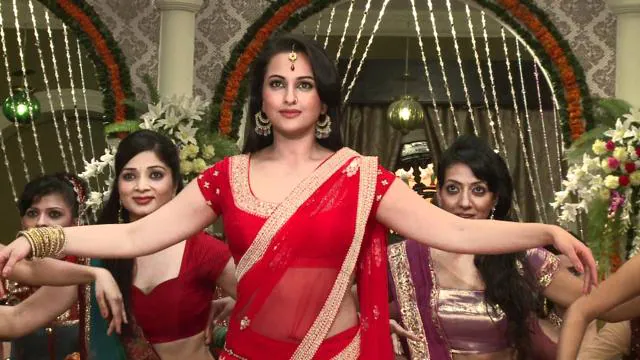Introduction
In recent times, the conversation around the portrayal of women in Indian cinema has evolved significantly. An important voice in this discussion is Sonakshi Sinha, a leading actress in the Indian film industry. A recent interview with Sinha, featured in the Hindustan Times[^1^], explores her perspective on a controversial scene from the 2012 film “Rowdy Rathore,” and sheds light on her journey towards a more mindful approach to her roles.
Understanding the Controversy
The Scene in Question:
In “Rowdy Rathore,” Akshay Kumar’s character refers to Sinha’s character as “ye mera maal hai,” a phrase implying ownership over a woman.
Public Response:
The dialogue received significant backlash for its derogatory connotation, raising questions about misogyny in Bollywood.
Sinha’s Initial Reaction:
At the time, Sinha defended the scene, citing it as a reflection of the character’s rowdy nature[^1^].
Change in Perspective:
In her recent interview, Sinha admitted that she would not participate in such a scene today, demonstrating her evolved understanding.
Lessons Learned:
Sinha’s change in perspective is a testament to the ongoing dialogue about women’s portrayal in media, and how it influences society’s perception.
The Evolution of Sonakshi Sinha
Early Career:
Sinha began her career with traditional roles, often playing the love interest of the lead male character.
Turning Point:
Over time, she started opting for more substantial roles, such as her performance in “Lootera,” which earned her critical acclaim.
Current Stance:
Today, Sinha is selective about the roles she accepts, ensuring they align with her beliefs and contribute positively to society[^1^].
Impact on Audience:
Sinha’s evolving choices reflect the changing expectations of Indian audiences, who increasingly demand diverse, strong female characters.
Influence on Industry:
As a leading actress, Sinha’s stance can inspire other actors and filmmakers to adopt a more responsible approach to their work.
The Broader Issue: Misogyny in Bollywood
Historical Context:
Misogyny has been a longstanding issue in Bollywood, with many films reinforcing harmful stereotypes about women.
Public Perception:
Audiences, too, are becoming more aware and vocal about the portrayal of women in films.
Industry Response:
There is a growing movement within Bollywood to address these issues, with more filmmakers focusing on creating empowering narratives for women.
Sinha’s Role:
Sinha’s public acknowledgment of the issue contributes to this ongoing dialogue.
Future Prospects:
While progress is being made, there is still a long way to go. Continued dialogue and active efforts are crucial for meaningful change.
Navigating Controversy Responsibly
Acknowledgment:
Sinha’s willingness to admit her past mistake sets a positive precedent for others in the industry.
Learning:
By acknowledging her growth, Sinha emphasizes the importance of learning and evolving over time.
Open Conversation:
Sinha’s candidness encourages more open conversation about these issues in the public sphere.
Impact on Fans:
Sinha’s actions may inspire fans to question and challenge problematic content.
Setting the Stage:
Sinha’s stance sets a precedent for other public figures to acknowledge past mistakes and use their influence to promote positive change.
What This Means for the Future of Bollywood
Changing Trends:
Sinha’s evolving perspective is reflective of a broader shift in Bollywood towards more respectful and nuanced portrayals of women.
Influence on Upcoming Artists:
Aspiring actors and filmmakers may be inspired to prioritize respect and equality in their work.
Audience Demand:
The audience’s increasing demand for films that respect women’s agency and individuality can help drive this change forward.
Industry Evolution:
If more influential figures follow Sinha’s lead, it could lead to a significant transformation in the industry’s approach to gender representation.
Creating a Better Cinema:
The ultimate goal is a cinema that respects and celebrates all its characters, regardless of their gender, promoting a healthier, more equal society.
Conclusion
Sonakshi Sinha’s recent revelations about her changing perspective towards her roles signify an essential evolution in the conversation around the portrayal of women in Bollywood. Her willingness to reconsider past decisions and learn from them is a significant step towards promoting more respectful representations of women in cinema. As audiences and industry figures continue to demand change, we can hope for a future where all characters are depicted with the respect and complexity they deserve.
FAQs
Q: What was the controversial scene in “Rowdy Rathore”? A: The scene involved Akshay Kumar’s character referring to Sonakshi Sinha’s character as “ye mera maal hai,” a phrase implying ownership over a woman.
Q: How has Sonakshi Sinha’s perspective changed since then? A: Sinha has stated that she would not participate in such a scene today, demonstrating her evolved understanding of the issue.
Q: What does this signify for Bollywood? A: Sinha’s stance is a positive indication of changing attitudes towards the portrayal of women in Bollywood and could inspire others in the industry to follow suit.
Image Credit: hindustantimes.com
